9 Steps to Rebuilding Credit in Canada
by Natalie Bell
Having bad credit sets invisible limitations on the quality of your day-to-day life. Check out our guide to getting the monkey off your back through smart credit management.
There are truly no shortcuts to rebuilding your credit in Canada - just as it typically takes years to damage your rating, it also usually takes years to restore your reputation with creditors. This goes doubly for those recovering from bankruptcy or other significant financial hardship. But that doesn’t mean there’s nothing you can do to deal with your financial challenges.
In fact, there are a number of simple habits you can start forming today that can provide the foundation for great long-term credit - and a few quasi-hacks that can jump-start your recovery process.
As specialists in bad credit lending, we’re in the business of helping people return to good financial health. To that end, we’ve prepared a list of simple steps to help you start making your way from the doghouse to the penthouse (or at least the people-house).
But first, let’s talk a little about how credit scores actually work.
About Credit Ratings & Bureaus
Your credit report is a detailed snapshot of your financial history over the past seven years. It includes everything from debts (such as mortgage or credit card payments) to your monthly utility bills to your history of loan applications. Your creditors report whether or not you’ve met your payment obligations each month to the major credit bureaus (Equifax and TransUnion in Canada), who in turn keep a record of your performance - and assign you a credit score.
Per Equifax, these are the five factors that go into calculating your credit score:
- The number of accounts you have
- The types of accounts
- Your used credit versus your available credit (ex. what percentage of your credit limit you have used)
- The length of your credit history
- Your payment history
Each credit bureau determines its own score, and as a result there will likely be slight variations. There are a variety of reasons for this, such as:
- Not every lender or creditor reports to both credit bureaus
- Each bureau follows its own mathematical model, meaning that some factors will weigh more heavily on your score from one bureau than another’s
Credit ratings play a significant role when lenders are deciding whether to grant you a loan - and what interest rates to charge. So how do you access yours?
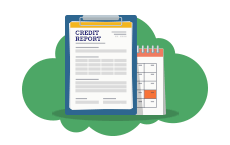
Step 1 to Rebuilding Your Credit: Access your credit reports
It’s a lot easier to figure out how to rebuild your credit when you know exactly what kind of challenge you’re facing. Although there are many companies out there who will try to convince you that you need to pay to access your credit report, doing so is free for all Canadians.
There are a number of different ways to request your credit report. The most direct way is to call Equifax and TransUnion - as noted, your score with each bureau will be different, so it’s wise to get your hands on both reports:
Equifax: 1-800-465-7166
TransUnion: 1-800-663-9980
You can request a free full credit report from each bureau once per year, which is typically dispatched by mail. If you need instant access to your score and a basic overview of the report’s contents, there are a number of free third-party services that can help you access your information online.
Important: Remember to do your research to make sure the service you use is legitimate! You must give up a great deal of your personal information (such as your SIN, phone number and address) in order to prove your identity, and the chance of being scammed is considerable if you’re inattentive.
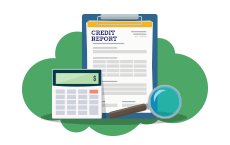
Step 2: Check your credit report for errors
As credit ratings are based on third-party reporting and are largely automated, it is not uncommon to discover errors after a close reading of your report. While many of these errors are minor in nature, some can be quite significant:
- If your name is very similar to someone else’s, it’s possible that their records have become intermixed with yours, leaving you on the hook for any financial regularities in their history.
- If you have been the unwitting victim of identity theft, you may see debts the thief’s incurred in your name.
- You may notice a debt has been listed more than once.
In the event you notice an error, you should contact both the credit bureau and the company that made the erroneous report. Gather as much documentation as you can to prove your position, and file complaints with both. (Often you may even use the same documentation for both claims.) If you’re already facing a steep challenge to rebuilding your poor credit, at least make sure you’re only dealing with your own problems!

Step 3: Take care of collections!
Your credit score is an evaluation of how reliable you are to potential lenders. You know what doesn’t make you look reliable? Having one of your debts referred to a collections agency! While there are quite a few predatory (and even illegal) collections companies out there, in theory at least, these companies are brought in as a last resort by creditors who despair of ever being repaid. By bringing in collectors, they agree to sacrifice a portion of whatever amount is recovered, reasoning that getting some money is better than none.
The entire job of a collections agency is to make your life miserable until you cough up what you’re owed, often with interest. Some disreputable firms will even continue harassing you over debts which are no longer legally recoverable. Make a list of your debts that have gone to collections firms. If they’re active and legitimate claims, taking care of these should be your first priority.
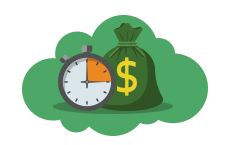
Step 4: Make your payments on time
If you’re like most Canadians, you probably owe considerably more than you earn: as of 2019, the average Canadian household debt was $1.79 for every $1 of income. Being indebted is normal - what separates those in good financial health from bad is how they manage those debts.
- You can start making strides on rebuilding your credit by simply making all of your monthly payments on time, including cell phone and utility bills.
- For example, having a contract for your phone and meeting your payment commitments is a great, affordable way to start building up equity.
- Try creating a calendar to track your payment due dates or schedule automatic withdrawals from your bank.
- Get into the habit of making your payments a few days early to prevent accidental lapses.

Step 5: Rebuild credit by taking out a small loan and paying it off
As with the example of the cell phone contract, some consumers are able to get a head start on rebuilding their credit by taking out a new personal loan and paying it off. Doing so shows that you are capable to responsibly paying off your loans, and is an example of prudence that can offset poorer past decisions.
One difficulty here lies in the fact that those with bad credit tend to have more difficulty securing new loans.
This is one way that Magical Credit has proven helpful in the past: we specialize in bad credit loans, typically with a lower principal than at traditional financial institutions.
You can use our online calculator to determine what your monthly payments would be like based on the amount and repayment term you desire.
Another option is to get a secured credit card. Secured credit cards require you to put down an initial deposit on your card (ex. $500 or $1000). This payment represents collateral. By regularly paying down any amounts you put on the card each month, your credit rating will gradually improve.

Step 6: Consolidate your debts
This step dovetails with the last. Chances are your debts come from a variety of sources: credit cards, car loans, lines of credit, mortgages, student loan payments etc. Each of these debts comes with its own terms and restrictions. Perhaps more importantly, each also has its own interest rate. Consolidating your debts refers to taking out a new loan to pay off one or more of your prior debts. This way, instead of having to juggle several payment commitments, you simply make payments on a single loan every month.

Step 7: Don’t close accounts - pay them off
Credit bureaus look favourably on accounts which have been open longer periods of time, as they provide a clearer look at your tendencies over time, and also show whether you’re able to maintain a healthy relationship with lenders. If you’re worried about, for example, your spending habits with your credit card, it’s better to simply lock the card away than to actually close your account. This will help you build a history of positive credit management.
Remember: having a credit card doesn’t mean you need to use it! There’s no difference between making minimum payments on an active credit card and a cancelled one, so just leave the account be (at least until you’ve paid it off).
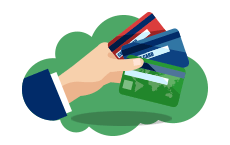
Step 8: Maintain a good credit card balance of used versus available credit
Credit Card Utilization (CCU) is an important, if under-discussed, bellwether for financial health - and therefore something important to keep in mind for rebuilding credit. CCU is calculated by dividing your credit card balances by your total credit card limit.
For example, let’s say you have two credit cards.
- The balance of CC1 is $325, and the balance of CC2 is $1550. The total balance is therefore $1875.
- The limit of CC1 is $1000, and the limit of CC2 is $3000. The total limit is therefore $4000.
- Your CCU is $1875/$4000, or 47% (well, 46.875% if you’re picky).
The Financial Consumer Agency of Canada recommends using a maximum of 35% of your available credit at any given time, with some experts arguing for figures as low as 10% to 20%. CCU figures above 50% become an active drag on your credit rating.
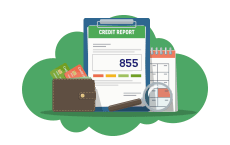
Step 9: Seek credit counselling
Improving your credit and learning to manage your funds responsibly isn’t an overnight process, and some habits can be tough to break! Fortunately, Canada has many highly competent credit counsellors who can help you make sense of your credit challenges and create a plan to move forward. Some banks and financial institutions offer consultations to their clients, and many community centres also host free seminars where you can learn and ask questions of an expert. There are also plenty of independent operators who can provide assistance for a modest fee.
These agencies may be able to help:
- Canadian Association of Credit Counselling Services
- Canadian Association of Independent Credit Counselling Agencies
- Ontario Association of Credit Counselling Services
Conclusion
When it comes to rebuilding credit, there’s no question the process will take a great deal of discipline and hard work for most Canadians. After all, if there were a quick fix for bad credit ratings, they’d be of no use to lenders!
We recommend treating the process as a second chance at learning to manage your money like an adult. Whatever challenges you faced in the past that put you in the hole might still be there, but now is the time to assert agency in your own life. Seek help and support from friends and family. Commit to making at least the minimum payment, and be proud of yourself when you’re able to exceed it. While it may be a long time before you are debt free, with prudent planning and attention to detail, you can develop a healthier relationship with any debt you do have as you work to change your financial narrative.
If you have more questions about rebuilding credit in Canada, get in touch with a credit counsellor using the prior links, or check out resources from the Government of Canada like this guide to improving your credit scores!
Our representatives are always happy to take questions about how a short-term Magical Credit loan can help you rebuild credit in Canada.





